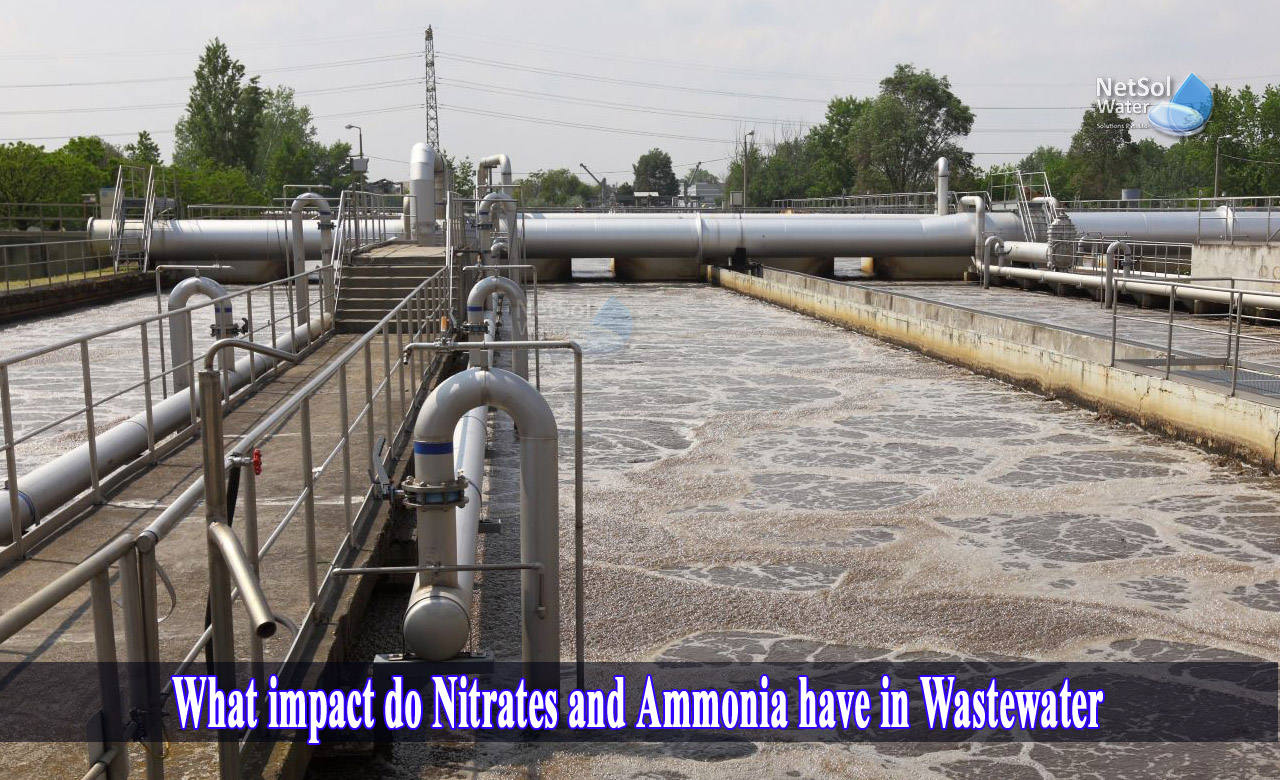What impact do nitrates and ammonia have in wastewater?
In wastewater, ammonia is the most reduced form of nitrogen, while nitrate is the most oxidized. As nitrate is converted to ammonia in anaerobic circumstances, an increase in ammonia concentration is associated with a decrease in nitrates and/or nitrites.
Nitrates are necessary plant nutrients, but excessive levels can cause serious water quality issues. Excess nitrates, when combined with phosphorus, can hasten eutrophication, resulting in substantial increases in aquatic plant growth and changes in the types of plants and animals that dwell in streams.
How can you ensure that the nitrifiers are properly cultivated, given the challenges of sustaining ammonia and nitrite/nitrate oxidation?
1: Keep an eye on your D.O. metres. It's important to remember that D.O. residuals at the probe are not the same as those found by flocculated bacteria.
2: Keep a check on the age of your sludge and note whether it is sufficient to prevent nitrifier washout. The nitrifier populations will eventually decline as sludge age increases, generating effluent ammonia and nitrite breakthrough.
3: Keep an account on the toxicity levels.
If ammonia and nitrite/nitrate levels are consistently high, we can use a mix of molecular tests to better monitor AOB/NOB populations. You can take corrective action before effluent problems occur.
Why is it so difficult to maintain biological ammonia and nitrite/nitrate removal?
Wastewater treatment plants would be a lot easier to run if we didn't have to worry about ammonia or nitrite in the effluent. These are substantial contaminants that must be eliminated before disposal.
But why are nitrifiers (AOB/NOB) so difficult to maintain in wastewater compared to other bacteria?
Rather of delving into system-specific growth ranges, let us give you an overview of why AOB and NOB are sluggish to grow, easy to upset, and difficult to recover once lost.
1-Nitrifiers grow slowly: They develop slowly in comparison to most wastewater heterotrophs. AOB cell division can take up to 12 hours even under ideal conditions. On the contrary, many common heterotrophs can divide every 30 to 60 minutes.
2-The need for plenty of oxygen:Many microorganisms in wastewater can flourish with D.O. residuals as low as 1 mg/L. However, converting ammonia to nitrate necessitates a large amount of oxygen. As a result, when D.O. levels are high, AOB and NOB thrive. This can range between 2 and 4 mg/L, depending on your MLSS levels, which all depends upon the system.
3-Easy to kill or impair:Many everyday chemicals hinder nitrifiers. They are easily harmed by amines, solvents, sulphides, and phenol, which are more of an issue in industrial systems. Even substantial organic loadings cause a reduction in D.O., resulting in inhibition.
4-Nitrifiers' metabolism produces less energy:When compared to the BOD (organic) degrading microorganisms, both AOB and NOB don't acquire as much food from oxidizing ammonia and nitrite.
5-Limited number of growing conditions:The optimal pH for growth is 7.5-8.2 and temperatures range from 20 - 38 degrees Celsius. Growth rates drop to critical levels outside of this range.
Netsol Water provides a complete variety of standard and fully configurable wastewater treatment systems, as well as their comprehensive maintenance. Choosing a trained, accredited, and experienced wastewater system specialist will considerably boost your chances of long-term satisfaction with your overall system.
We have over 10 years of experience custom-designing and manufacturing wastewater treatment plants. You can schedule a conversation with our engineer or obtain an estimate by visiting our website. We can guide you through the process of determining the best solution and a reasonable price for your wastewater treatment system requirements.To begin the conversation, please contact us at +919650608473 or send an email to enquiry@netsolwater.com for further information or product purchase related query.



